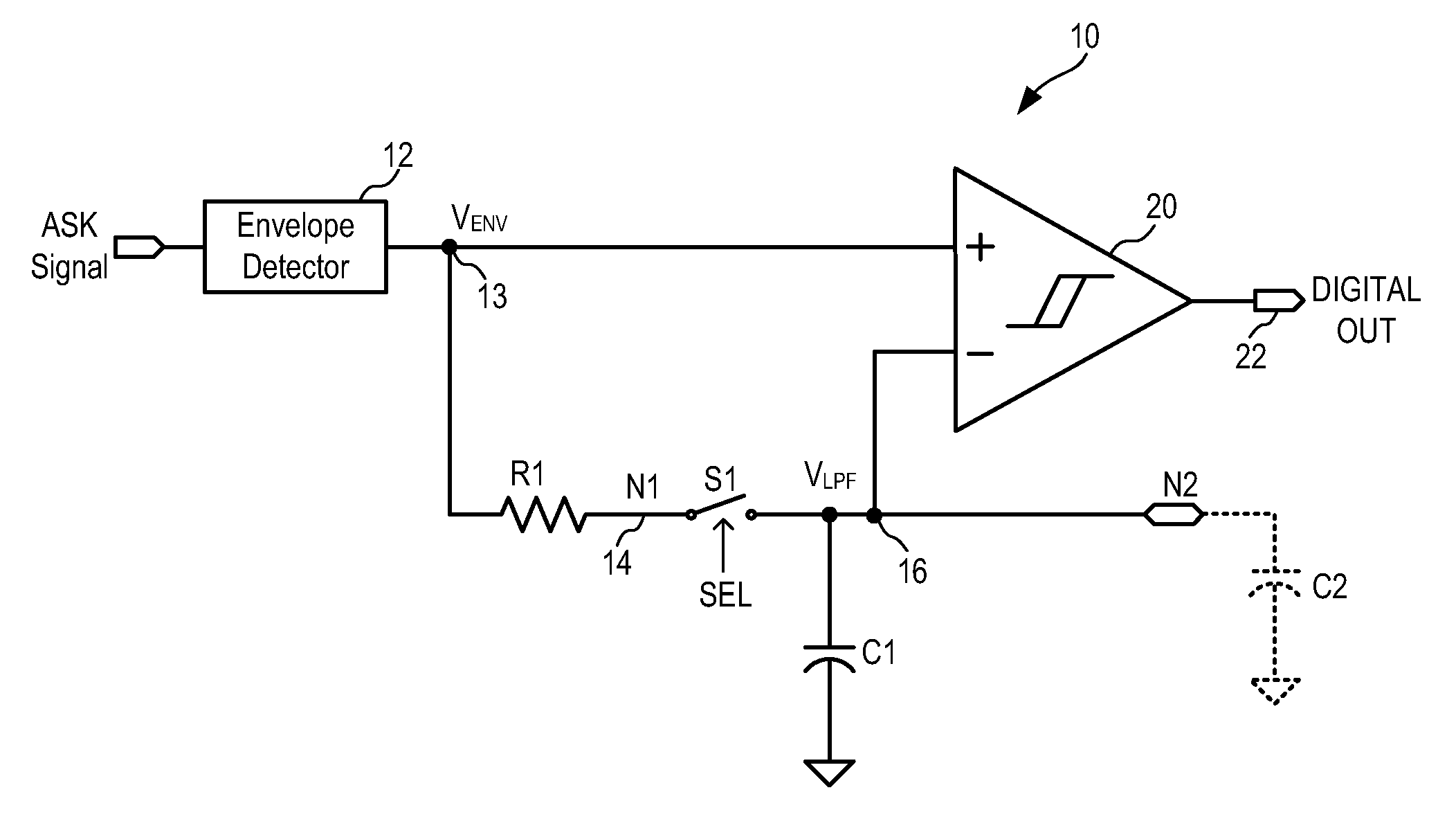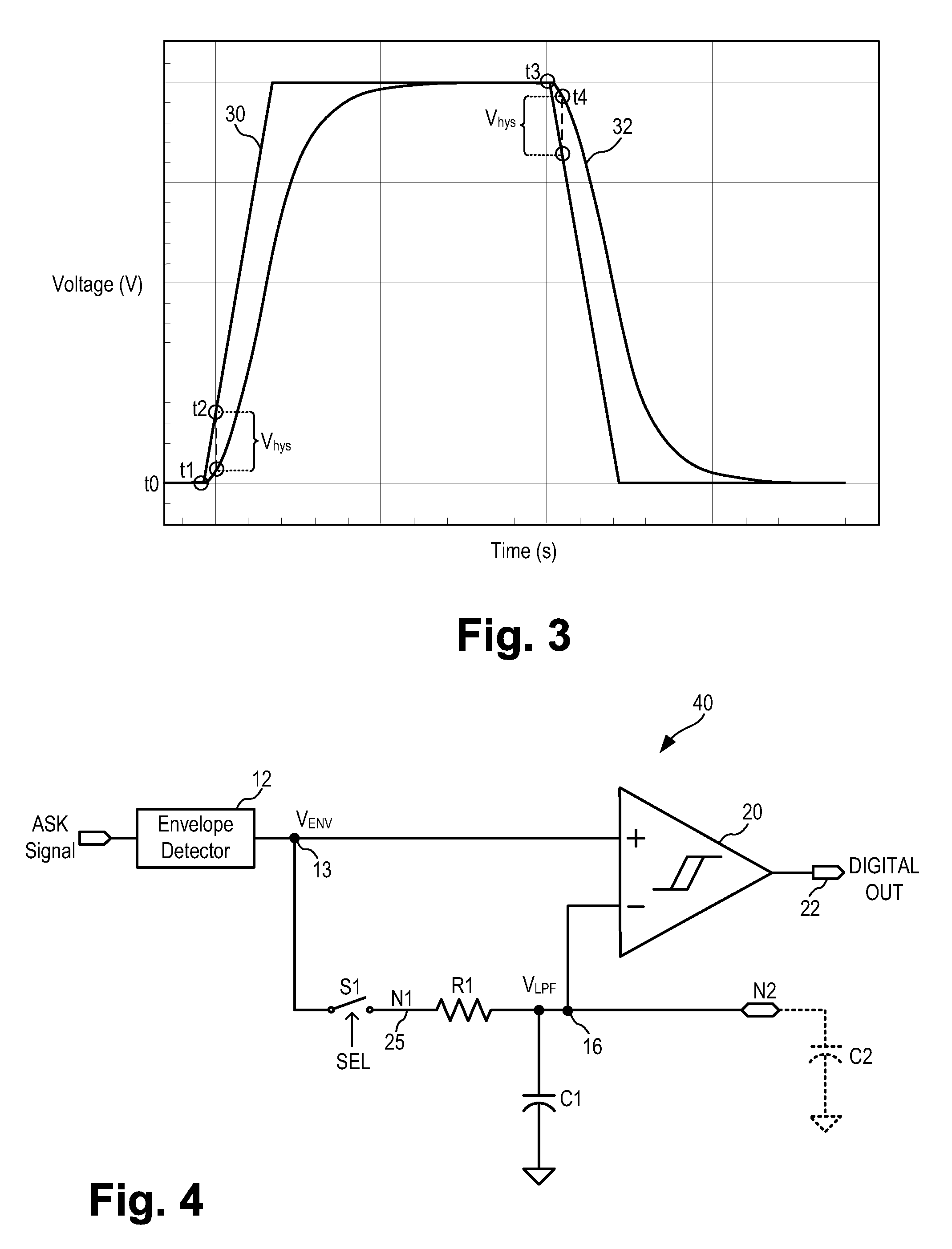Demodulator with Multiple Operating Modes for Amplitude Shift Keyed Signals
- Summary
- Abstract
- Description
- Claims
- Application Information
AI Technical Summary
Benefits of technology
Problems solved by technology
Method used
Image
Examples
second embodiment
[0040]Furthermore, in the embodiment shown in FIG. 1, the position of resistor R1 and switch S1 can be switched without affecting the functionality of the demodulator. FIG. 4 is a schematic diagram of a demodulator for amplified shift keyed signals according to the present invention. Referring to FIG. 4, switch S1 is connected between node 13 being the output terminal of the envelope detector 12 and a node N1 (or node 25). Resistor R1 is connected between node N1 and a node 16 also denoted as node N2) which is also the inverting input terminal of comparator 20. Capacitor C1 is connected between the inverting input terminal (node 16) of comparator 20 and the ground node. ASK demodulator 40 of FIG. 4 operates in the same manner as the ASK demodulator of FIG. 1. The exact arrangement of resistor R1 and switch S1 in the ASK demodulator of the present invention is not critical to the practice of the present invention.
third embodiment
[0041]In the above-described embodiments, the ASK demodulator of the present invention operates in the analog domain. According to other embodiments of the present invention, the ASK demodulator can operate in the digital domain as well by digitizing the envelope signal. FIG. 5 is a schematic diagram of a demodulator for amplified shift keyed signals according to the present invention. Referring to FIG. 5, an ASK demodulator 50 for demodulating an amplifier shift keyed signal (ASK signal) includes an envelope detector 52, an analog-to-digital converter (ADC) 54, a selection switch S1, a digital low-pass filter 60 and a digital comparator 64. ASK demodulator 50 receives an incoming ASK signal in which the amplitude of a carrier oscillation is switched between two states in accordance with a binary data message. ASK demodulator 50 operates in the same manner as ASK demodulators 10 and 40 to generate a digital output signal indicative of the binary data message encoded in the ASK signa...
PUM
 Login to View More
Login to View More Abstract
Description
Claims
Application Information
 Login to View More
Login to View More - R&D
- Intellectual Property
- Life Sciences
- Materials
- Tech Scout
- Unparalleled Data Quality
- Higher Quality Content
- 60% Fewer Hallucinations
Browse by: Latest US Patents, China's latest patents, Technical Efficacy Thesaurus, Application Domain, Technology Topic, Popular Technical Reports.
© 2025 PatSnap. All rights reserved.Legal|Privacy policy|Modern Slavery Act Transparency Statement|Sitemap|About US| Contact US: help@patsnap.com



